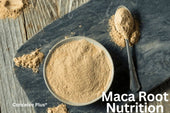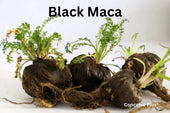Lepidium Meyenii Taste: Unlocking the Secrets

Maca has been cultivated in the high-altitude regions of the Peruvian Andes for centuries. This resilient plant thrives in harsh, windy conditions and is held in high regard by locals who value it for both dietary and ceremonial purposes. As a cruciferous vegetable related to broccoli and cauliflower, it features an underground tuber that has gained global popularity in recent years, with many curious about lepidium meyenii taste and its unique earthy flavor profile. Cultivators dry and grind the tuber into a powder form, making it easier to add to a variety of dishes.
Distinct Flavor Profile
Many people ask, “What does maca root taste like?” Its inherent taste is often described as earthy and slightly nutty, with hints of sweetness reminiscent of butterscotch or caramel. The flavor can be surprisingly robust, depending on the variety and freshness of the root. Some consumers detect an almost malt-like character, which adds depth to smoothies and baked goods. Because lepidium meyenii taste can vary based on environmental factors, individuals often experiment with different recipes to find their ideal balance [1].
If you're interested in delving deeper into the unique benefits and storied heritage of red maca root, be sure to check out our article "Red Maca Root: Unveiling an Ancient Marvel" for a comprehensive exploration.
Practical Kitchen Tips
Maca powder is versatile and can be blended into smoothies, protein shakes, and even coffee or tea. Due to its strong taste, it’s wise to start with small amounts and adjust as you become accustomed to its unique profile. Experimenting with various ingredients—like cacao or sweet fruits—helps mellow any sharp undertones. It also pairs well with spices such as cinnamon, ginger, and turmeric. For those who prefer savory dishes, adding a light sprinkle to soups or sauces can impart a subtle, nutty layer of complexity. The best approach is to gradually incorporate this superfood into your everyday meals to avoid overwhelming your palate [2].
Unique Potential Advantages
Beyond its culinary appeal, this ancient Peruvian root has been explored for its nutritional attributes. Traditional Andean communities have utilized it to support energy levels during long workdays at high altitudes. Modern proponents emphasize its vitamins, minerals, and possible adaptogenic properties, although more scientific exploration continues. Since the plant is not a stand-in for medical treatments, those with existing conditions should consult a professional before significantly increasing consumption.
How Maca Root Supports Skin Health
One of the primary reasons maca is believed to promote a glowing complexion is its ability to help regulate hormonal balance. Since hormonal fluctuations often lead to skin issues such as acne, excess oil production, or dryness, maca's adaptogenic properties may contribute to a more stable skin environment. Studies suggest that adaptogens help the body manage stress, and since stress is a major trigger for breakouts and inflammation, this indirect effect could support clearer skin over time [3].
If you're curious about how this ancient superfood can enhance overall wellness beyond its distinctive taste, be sure to check out our article on organic maca "Organic Maca Is the Health World: A Comprehensive Examination" for a deeper dive into its health benefits.
The Bottom Line
Lepidium meyenii taste reveals its complexities in every sip and bite, blending subtle sweetness with earthy undertones. Exploring it opens doors to ancient traditions from the maca root origin in Peru, inviting adventurous palates to embrace new flavors. Whether you prefer a mild introduction to maca in morning beverages or a bolder accent to your baked treats, this Andean gem can delight and surprise. By starting with modest amounts, you can gradually discover how this unique tuber complements your favorite meals. Although popular in health circles, it remains an underappreciated ingredient for culinary enthusiasts. Approach it with curiosity, and you may find it becomes a staple in your pantry, offering a taste of Peruvian heritage with each use. Additionally, experimenting with fermentation or advanced baking methods can unlock flavor nuances, truly further showcasing the adaptability of this age-old ingredient for enthusiastic home cooks.
References
- Ulloa Del Carpio N, Alvarado-Corella D, Quiñones-Laveriano DM, Araya-Sibaja A, Vega-Baudrit J, Monagas-Juan M, Navarro-Hoyos M, Villar-López M. Exploring the chemical and pharmacological variability of Lepidium meyenii: a comprehensive review of the effects of maca. Front Pharmacol. 2024 Feb 19;15:1360422. doi: 10.3389/fphar.2024.1360422. PMID: 38440178; PMCID: PMC10910417.
- Gonzales-Arimborgo C, Yupanqui I, Montero E, Alarcón-Yaquetto DE, Zevallos-Concha A, Caballero L, Gasco M, Zhao J, Khan IA, Gonzales GF. Acceptability, Safety, and Efficacy of Oral Administration of Extracts of Black or Red Maca (Lepidium meyenii) in Adult Human Subjects: A Randomized, Double-Blind, Placebo-Controlled Study. Pharmaceuticals (Basel). 2016 Aug 18;9(3):49. doi: 10.3390/ph9030049. PMID: 27548190; PMCID: PMC5039502.
- Dokkedal-Silva V, Morelhão PK, Tufik S, Andersen ML. The increasing popularity of Peruvian maca (Lepidium meyenii) and its potential impacts on sleep and quality of life. Clinics (Sao Paulo). 2024 Jun 6;79:100398. doi: 10.1016/j.clinsp.2024.100398. PMID: 38848635; PMCID: PMC11214369.































